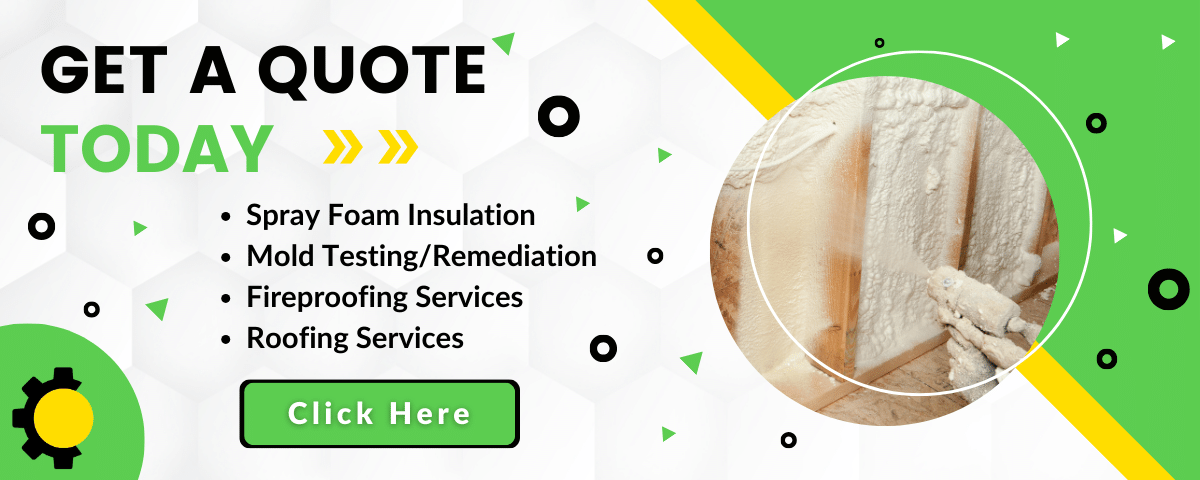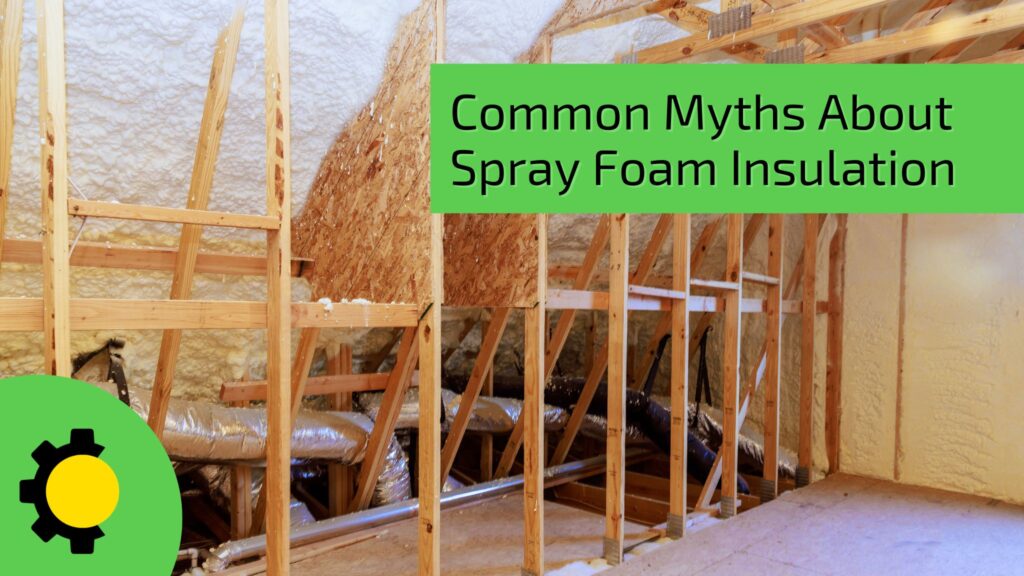Spray foam insulation has become a popular choice for homeowners due to its superior energy efficiency and durability. However, like many innovative products, it has also been the subject of numerous myths and misconceptions. These misunderstandings can create hesitation or confusion for those considering spray foam for their homes. By addressing these myths and providing accurate information, we aim to help homeowners make confident, informed decisions about their insulation options. Let’s tackle some of the most common misconceptions and separate fact from fiction.
Myth 1 – Spray Foam Insulation is Dangerous to Your Health
One of the most widespread concerns about spray foam insulation is that it poses a health risk due to the chemicals used during application.
Misconception
The belief is that spray foam insulation releases toxic fumes indefinitely, creating an unsafe indoor environment.
Fact
When installed correctly and allowed to fully cure, spray foam insulation is safe and does not emit harmful gases. The curing process typically takes about 24 hours, after which the product becomes inert and stable.
Explanation
The key to safety lies in professional installation. Certified installers follow strict guidelines to ensure proper application, ventilation, and curing. This prevents any potential issues related to chemical exposure. Homeowners should always choose experienced professionals to guarantee the insulation is applied safely and effectively.
Myth 2 – Spray Foam Insulation is Too Expensive
The cost of spray foam insulation is often cited as a reason to avoid it, with many assuming it’s unaffordable compared to traditional insulation methods.
Misconception
Some people believe spray foam insulation is prohibitively expensive, making it an impractical choice for most homeowners.
Fact
While the upfront cost of spray foam insulation may be higher than other options, it provides significant long-term savings. Its superior energy efficiency can lower heating and cooling bills by up to 50%, quickly offsetting the initial investment.
Explanation
Spray foam insulation creates an airtight seal, reducing energy loss and improving overall efficiency. Over time, the energy savings can not only recover the initial costs but also save homeowners thousands of dollars. Additionally, its durability means it rarely needs replacement, unlike traditional insulation that may degrade or settle over time.

Myth 3 – Spray Foam Insulation Damages Roofs
A common concern is that spray foam insulation can cause roof damage by trapping moisture, leading to rot and other structural issues.
Misconception
Spray foam insulation is thought to retain moisture against the roof, encouraging mildew growth and deterioration.
Fact
When installed properly, spray foam insulation actually helps prevent moisture problems and can enhance the structural integrity of your roof. It creates a seamless air barrier that keeps moisture out, protecting your home from leaks and drafts.
Explanation
Moisture issues occur when insulation is improperly installed or ventilation is neglected. Professional spray foam contractors ensure that spray foam is applied with the correct ventilation systems in place to maintain healthy airflow. Additionally, the foam’s ability to adhere directly to surfaces can strengthen the roof, reducing the risk of damage during storms or heavy winds.
Myth 4 – Spray Foam Insulation is Only for New Homes
Many homeowners believe that spray foam insulation is only practical for new construction and cannot be used in older homes.
Misconception
Spray foam insulation is assumed to be too invasive or incompatible with the structure of older homes.
Fact
Spray foam insulation can be retrofitted into existing homes with minimal disruption, making it an excellent option for improving energy efficiency in older properties.
Explanation
During retrofitting, spray foam can be applied in attics, crawl spaces, and walls without the need for extensive remodeling. Closed-cell foam is particularly beneficial for older homes because it acts as both insulation and a moisture barrier, which can help protect against common issues like drafts and dampness. This versatility makes spray foam a viable option for homes of any age.
Myth 5 – Spray Foam Insulation Loses Effectiveness Over Time
Some people worry that spray foam insulation will degrade or lose its insulating properties after a few years, making it a short-term solution.
Misconception
The assumption is that spray foam breaks down over time, becoming less effective at insulating your home.
Fact
Spray foam insulation is highly durable and designed to maintain its performance for decades. Unlike traditional insulation, it does not settle, sag, or lose its shape, ensuring consistent energy efficiency.
Explanation
Spray foam’s ability to create an airtight seal and adhere to surfaces ensures that it remains effective over the long term. Its resistance to moisture, pests, and temperature fluctuations further enhances its durability. In most cases, spray foam insulation lasts the lifetime of the home, requiring little to no maintenance.

Myth 6 – Spray Foam Insulation is Harmful to the Environment
Environmental concerns often deter homeowners from considering spray foam insulation, as they assume it uses harmful chemicals and contributes to pollution.
Misconception
Spray foam insulation is believed to be an eco-unfriendly option due to its chemical composition and production process.
Fact
Modern spray foam products are becoming increasingly eco-friendly, with many manufacturers adopting low-VOC (volatile organic compound) formulations. Additionally, the energy savings achieved through spray foam insulation significantly reduce your home’s carbon footprint.
Explanation
By creating an airtight seal, spray foam insulation minimizes energy loss, reducing the demand for heating and cooling. Over time, this leads to lower energy consumption and a positive environmental impact. Many manufacturers now produce spray foam with environmentally conscious materials, making it a greener choice for homeowners.
Conclusion
Spray foam insulation is an innovative and highly effective solution for improving energy efficiency and comfort in homes. While myths and misconceptions can create hesitation, understanding the facts reveals the many advantages of this versatile insulation method. From spray foam’s safety and durability to its ability to save money and reduce environmental impact, spray foam insulation stands out as a superior choice when installed correctly by professionals.
If you’re considering spray foam insulation, focus on working with experienced installers who can ensure the product is applied safely and effectively. Don’t let myths hold you back—embrace the benefits of spray foam insulation and enjoy a more comfortable, efficient, and secure home.

